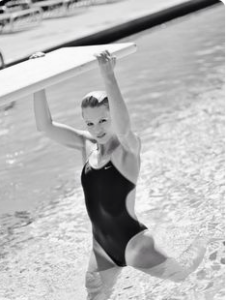Let’s dive in, shall we?

 To get a diving board or to not get a diving board? The first thing you should think about is safety and the location of a diving board is extremely important. If you don’t have the appropriate pool size then the answer is: don’t get one. Diving boards have strict placement requirements The ANSI/NSPI standards are very specific on the water depth on the board and in front of the board. It is also pretty specific on the required width of a pool and the slope of 1:3 maximum for the floor from deep end to shallow end.If you have the appropriate dimensions then one should observe very strict technical specs when installing a diving board if none existed on the pool beforehand.
To get a diving board or to not get a diving board? The first thing you should think about is safety and the location of a diving board is extremely important. If you don’t have the appropriate pool size then the answer is: don’t get one. Diving boards have strict placement requirements The ANSI/NSPI standards are very specific on the water depth on the board and in front of the board. It is also pretty specific on the required width of a pool and the slope of 1:3 maximum for the floor from deep end to shallow end.If you have the appropriate dimensions then one should observe very strict technical specs when installing a diving board if none existed on the pool beforehand.Now, if you are just replacing your diving board, and you already have a stand look for a board that matches your stand. Not in style but in size. Do not install a larger diving board than the original one. The diving stand (and jig) must also be changed for the fulcrum location to be correct.
The placement and setting for a new concrete pad must also be very specific. You can refer to the owner’s manual for each diving board stand you purchase. The stand gives you a solid base for the board as it also provides the spring. You should never install a diving board without first using the right stand.
Depending on your pool size you can choose from 6′ and 8′ diving boards and jump boards. FYI, jump boards aren’t as bouncy, they’re for smaller, shallower pools.
Now, if you haven’t closed your pool yet…get out there and have fun!
Learn more about fiberglass swimming pool shells, do it yourself inground fiberglass saltwater swimming pool kits, and fiberglass pool shell with tanning ledge here at Calm Water Pools.
Photo: Pinterest